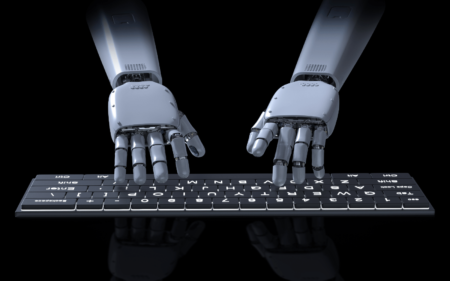When the pope appeared in a sparkling white puffer jacket in internet images, it marked an important turning point in humanity’s grappling with an important new development in society.
No, it wasn’t because the aged religious leader had recently discovered modern fashion sense. The consternation was because that image was generated by artificial intelligence (AI).
The jacket from premium brand Balenciaga was created in AI image engine Midjourney.
“I just thought it was funny to see the Pope in a funny jacket,” its creator told BuzzFeed News. Refusing to give his surname, he identified himself as Pablo Xavier, a 31-year-old construction worker from Chicago. It gets better. He was tripping on mushrooms when he created the images in Midjourney, he admitted. “I try to do funny stuff or trippy art — psychedelic stuff. It just dawned on me: I should do the Pope. Then it was just coming like water: ‘The Pope in Balenciaga puffy coat, Moncler, walking the streets of Rome, Paris,’ stuff like that.”
It has been described as “the first real mass-level AI misinformation case”. It isn’t even the first such AI-generated image of a global figure to go viral, after images of former US President Donald Trump emerged, weeks before his actual arrest. These images of a lifelike-looking Trump fighting off a few New York policemen are a sign of things to come.
There was never any real hope for ‘Pope Drip’
The world is aware of the power of deep fake video editing software that can make it appears as if just about anyone actually said and do what the video shows. Welcome to the work of AI imagery that is scarily accurate.
Except for the hands, which AI image generators seem to be struggling with. Other details that are easily spotted are a row of trees without tree trunks or cars with lines where doors should be.
The Trump images were also created using Midjourney, by journalist Eliot Higgins, the founder investigative website Bellingcat. But as Higgins said of Midjourney: “It can’t do a good job of re-creating real faces. They always look a bit weird.”
Deep fake videos often emerge and are scarily realistic. In February, US President Joe Biden seemingly made an admission about regretting purchasing a zoo, in a two-minute audio clip that refers to the 2011 movie We Bought a Zoo, starring Matt Damon. Biden says “owning a zoo sucks” in the audio clip that is accompanied with images. “This shit is so hard. It looked much easier in the movie.”
Although that might have been Ronald Reagan’s private thoughts after that actor really did end up in the White House, it’s clear that Biden himself never said these things.
The next debate after veracity is whether these images constitute art.
For a few years, I co-curated a digital art sub-festival of the great National Arts Festival, before Covid ended that event. Digital art, for want of a better way of describing creativity using digital tools, is the natural evolution of other art forms. Artists have always used the tools available to them – from drawing on cave walls to the Renaissance golden age of painting.
Is Photoshop – and now Midjourney – an artistic tool or just a photo-editing app? The artist would say, it depends on the user. Are the AI-created videos of Harry Potter characters appearing in a fictitious Balenciaga fashion shoot art? Or just very slick craft-making?
The level of sophistication of all of these AI images makes them hard to differentiate from actual pictures and videos, which is a problem in and of itself. More problematic is how this new generation of AI-created imagery will be used for disinformation, whether intentionally or not. Just ask the puffer-wearing pope.
- This article first appeared in the Daily Maverick




